Hong Kong Trade Development Council - September 26, 2018 - Science parks, utilities and innovators team up to realise smart-city dream. The vision to streamline city management, improve people's quality of life and be a leader in sustainability focuses on six major areas: Smart Mobility, Smart Living, Smart Environment, Smart People, Smart Government and Smart Economy. As identified in the blueprint, the key lies in making use of innovation and technology (I&T).
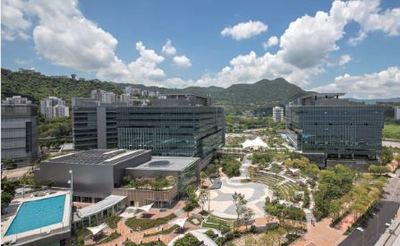 |
In collaboration with the Chinese University of Hong Kong, we set up the smart region which is a “living lab” for piloting innovative solutions using technologies from the incubates and partner companies in Science Park.
Photo courtesy of HKTDC |
| |
Hong Kong Trade Development Council - September 26, 2018
Science parks, utilities and innovators team up to realise smart-city dream.
Since the local government released its Smart City Blueprint in December 2017, Hong Kong has been on course towards becoming a world-class smart city.
The vision to streamline city management, improve people's quality of life and be a leader in sustainability focuses on six major areas: Smart Mobility, Smart Living, Smart Environment, Smart People, Smart Government and Smart Economy.
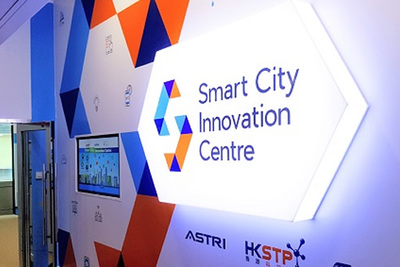 |
Smart City Innovation Centre
The first 5G innovation lab in Hong Kong purpose-designed with targeted resources to facilitate 5G development.
Photo courtesy of HKTDC |
| |
As identified in the blueprint, the key lies in making use of innovation and technology (I&T).
Achievements forecast for the next five years were ambitious but have been progressing steadily thanks to collaborative efforts between public and private sectors, and the community in general.
Many of the future technologies necessary to achieve these goals are being developed at Hong Kong Science Park, designated pilot site for the government’s Smart Region.
The park is part of the Hong Kong Science and Technology Parks Corporation (HKSTP).
Peter Yeung, Head of Electronics & ICT Clusters, Smart City Platform, HKSTP, outlines some of the progress to date.
 |
Hong Kong Smart City Platform
Photo courtesy of HKTDC |
| |
Having established Hong Kong’s first Smart Region, Hong Kong Science Park creates the ideal testbed for pushing forward Hong Kong’s Smart City vision, leveraging Hong Kong’s attributes of dense population, efficiency, world-class ICT infrastructure and high Internet connectivity.
Science Park as a living laboratory supports and pilots innovative solutions and the adoption of new technologies.
Our data platform provides the gateway to a wealth of machine readable data sets from industry and government, thereby fostering a collaborative platform for the ecosystem and the business sector to share ideas and co-create data applications to deliver socio-economic benefits.
 |
| Photo courtesy of HKTDC |
| |
Through a concerted approach to facilitate smart city development, we aim to accelerate the development of core enabling technologies, including artificial intelligence, block-chain, cyber security, data analytics, edge computing and create a sandbox for fintech solutions for different types of companies, from start-ups to mid-size finance institutions.
Industry Partners
“March 2018 marked the launch of our Data Analytics Platform, a collaboration between HKSTP and leading technology partners Siemens, Hitachi Vantara, CLP Holdings, Infineon and NVIDIA to accelerate adoption of smart-city solutions,” Mr Yeung explained.
“The partners have provided access to data, hybrid cloud, data-centric tools and software to harness the power of big data and Internet of Things for developing data-driven innovation.”
 |
Peter Yeung, Head of Electronics & ICT Clusters, Smart City Platform, Hong Kong Science and Technology Parks.
Photo courtesy of HKTDC |
| |
The platform was an extension of the Data Studio launched in February 2017 as a neutral and secured platform for corporations to share data and co-create with the developer community.
By 31 July 2018, the Data Studio had attracted more than 7,000 visitors and 760 registered developers who built 832 applications, Mr Yeung said.
It housed 283 datasets of various disciplines such as health, finance, environment, education and transport for fostering the development of multiple apps.
To advance smart-city concepts, eight multifunctional smart lampposts had been installed in Science Park with Internet of Things (IoT) technologies developed by partner companies.
Their function was to collect data on the external environment (such as weather conditions, and pedestrian and traffic flow), provide light-emitting diode lighting, and allow quick-charging for electric vehicles.
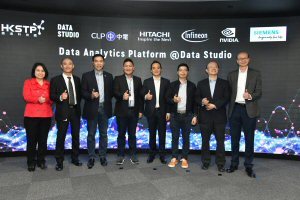 |
The Data Analytics Platform launch at Hong Kong Science Park in March 2018.
Photo courtesy of HKTDC |
| |
Meanwhile, a number of projects have been conducted at The Sensor Hub, an open platform for testing the latest sensor technologies to improve quality of life, including air, water and weather sensors.
The Smart City Digital Hub, designed to accelerate development of smart-city applications and solutions specifically for Hong Kong, had also been active since its launch last December in collaboration with Siemens.
“The open lab, consisting of the Smart Mobility Test Bed and Smart Energy Lab, allows experts to carry out R&D to tackle city challenges such as traffic congestion, public safety, energy saving and city planning,” Mr Yeung said.
Greener Power
On the green energy front, power company CLP Power Hong Kong Limited (CLP) is introducing the Feed-in Tariff (FiT) Scheme and Renewable Energy Certificates (RECs) on 1 Oct 2018 to encourage the community to participate in renewable energy development.
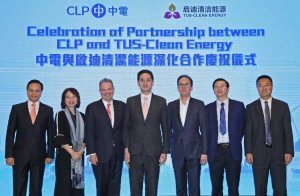 |
Richard Lancaster, CEO, CLP Holdings Ltd (third from left) with other officials at the signing of the CLP/TUS joint venture.
Photo courtesy of HKTDC |
| |
“According to the government’s Hong Kong Climate Action Plan 2030+, it estimated that Hong Kong has about 3-4% of realisable RE [renewable energy] potential arising from wind, solar and waste-to-energy,” a CLP spokesperson said.
“We believe both the FiT scheme and RECs will help encourage local RE development which will contribute to the share of cleaner energy in the fuel mix for Hong Kong.”
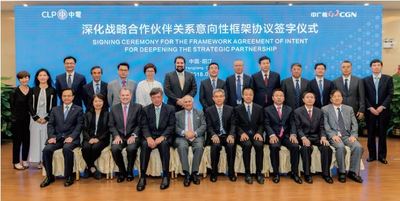 |
Chairman Sir Michael Kadoorie led a delegation of senior executives on a visit to Yangjiang Nuclear Power Station in May 2018.
Photo courtesy of CLP Holdings 2018 Interim Report |
| |
With its long-standing track record in building and operating electricity supply infrastructure, CLP is also contributing its expertise via a joint venture with the Chinese mainland’s TUS-Holdings Co., Ltd (TUS).
The partnership between their respective subsidiaries – CLP Smart Energy (China) Limited and Beijing TUS-Clean Energy Co., Ltd – aims to develop and deploy new-energy and smart-city technologies amid growing demand for digitalised energy infrastructure and services on the mainland.
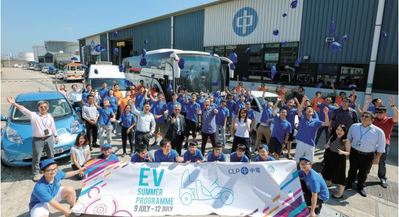 |
CLP and the Hong Kong University of Science and Technology jointly hosted an electric vehicle summer programme for secondary students.
Photo courtesy of CLP Holdings 2018 Interim Report |
| |
A CLP spokesperson said the cooperation between the two companies would have a synergistic impact on the development of innovative energy solutions, thus contributing to the evolution of smart-city developments in Hong Kong and the mainland. Initial focus of this partnership would be in southern China, especially the Guangdong-Hong Kong-Macau Bay Area.
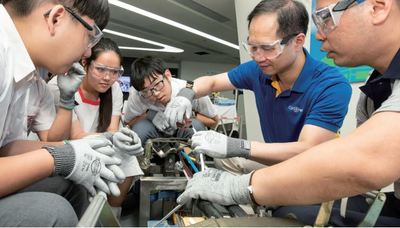 |
CLP supports Science, Technology, Engineering and Mathematics (STEM) education for young people.
Photo courtesy of CLP Holdings 2018 Interim Report |
| |
Richard Lancaster, CEO of CLP, said the Bay Area – positioned to be a global hub of innovation, finance, shipping and trade – will “obviously become a connected network of smart cities enabled by digitalisation. To achieve this we will need clean, reliable and efficient energy infrastructure supported by innovative customer services,” he said. “With our strengths combined, TUS and CLP are well positioned to capture the business opportunities that emerge.”
Construction Prowess
Hong Kong is also showing its capabilities in regard to smart building.
Hong Kong-headquartered isBIM Limited (isBIM), a leading building information modelling (BIM) data consultancy in the Asia Pacific, is at the forefront, working with government, leading property developers, architects, contractors and construction education institutes to adopt and implement BIM across various sectors.
 |
| Photo courtesy of isBIM Limited |
| |
Anthony Lam, Director, isBIM, explained that BIM could help the construction industry build a smarter Hong Kong: from the design stage where the technology enabled greener, more sustainable and user-friendly buildings; to fulfilling health and safety requirements on site, monitoring progress and identifying efficiencies; as well as facilities management.
Mr Lam said an increasing number of developers and architects implemented smart building designs.
The visible signs of this included transforming decorative elements into green features such as shading, while advanced sensors on rooftop solar panels collected temperature and sun-path data from the Hong Kong Observatory and automatically adjusted angle and direction to maximise sunlight absorption.
 |
Anthony Lam, Director, isBIM.
Photo courtesy of HKTDC |
| |
“Another innovation being adopted in Hong Kong developments was virtual reality”, he said.
“The data integrated BIM model provides an immersive environment for users to experience how the whole building will be like visually when it is completed, hence everything is predictable and user experiences can be enhanced.”
 |
| Photo courtesy of isBIM Limited |
| |
Transforming Buildings
“The whole idea of BIM is to transform and digitalise all information and data of a particular building,” Mr Lam said.
Such data could be used in various ways – such as simulation, visualisation, optimisation, comparison, monitoring and analysis.
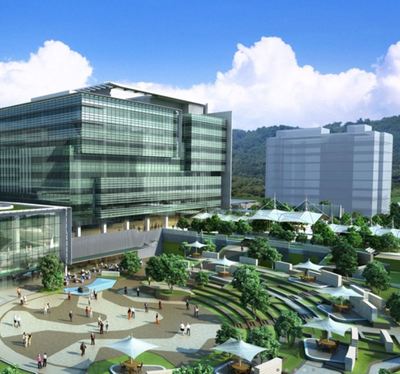 |
| Photo courtesy of isBIM Limited |
| |
“The more building information is gathered and digitalised, the bigger the Hong Kong buildings database will become,” he added.
“Such big data can also be used as records or references when the building is being demolished or redeveloped.”
Projects where isBIM has deployed the technology for smarter development include the Hong Kong Science Park phase 3, public housing development for the Hong Kong Housing Authority, the Innovation Tower at Hong Kong Polytechnic University, and West Kowloon Cultural District.
 |
| Photo courtesy of isBIM Limited |
| |
To find out more about smart cities and smart businesses, have a look at the Hong Kong Trade Development Council’s Smartbiz Expo
http://hkmb.hktdc.com/en/1X0AF2YW/heads-up/SmartBiz-Expo-Brings-Hi-tech-Solutions-to-SMEs
Source: HKTDC
https://hkmb.hktdc.com/en/
ASTROMAN Magazine - 2018.08.01
China-Europe Railway Express (Zhengzhou): The Silk Rail Road Gets on Track
https://www.astroman.com.pl/index.php?mod=magazine&a=read&id=2556
ASTROMAN Magazine - 2018.07.11
The Asian Infrastructure Investment Bank (AIIB) to Transition to New Model For Project Approvals
https://www.astroman.com.pl/index.php?mod=magazine&a=read&id=2544
ASTROMAN Magazine - 2018.07.06
The third Belt and Road Summit Attracted 5,000 Participants, fostered concrete cooperation under the theme “Collaborate for Success”
https://www.astroman.com.pl/index.php?mod=magazine&a=read&id=2543
ASTROMAN Magazine - 2018.07.03
USD15 billion China-invested refinery and petrochemical complex seen as essential part of the economic future of Brunei
https://www.astroman.com.pl/index.php?mod=magazine&a=read&id=2538
ASTROMAN Magazine - 2018.06.18
The Belt and Road Blockchain Consortium: The Way Forward. The Belt and Road Summit 2018 in Hong Kong on 28 June, 2018
https://www.astroman.com.pl/index.php?mod=magazine&a=read&id=2533
ASTROMAN Magazine - 2018.06.11
A flagship Indonesian Belt and Road site, the Morowali Industrial Park, received an extra USD1.22 billion in mainland investment
https://www.astroman.com.pl/index.php?mod=magazine&a=read&id=2529
Editor-in-Chief of ASTROMAN magazine: Roman Wojtala, Ph.D.
|

